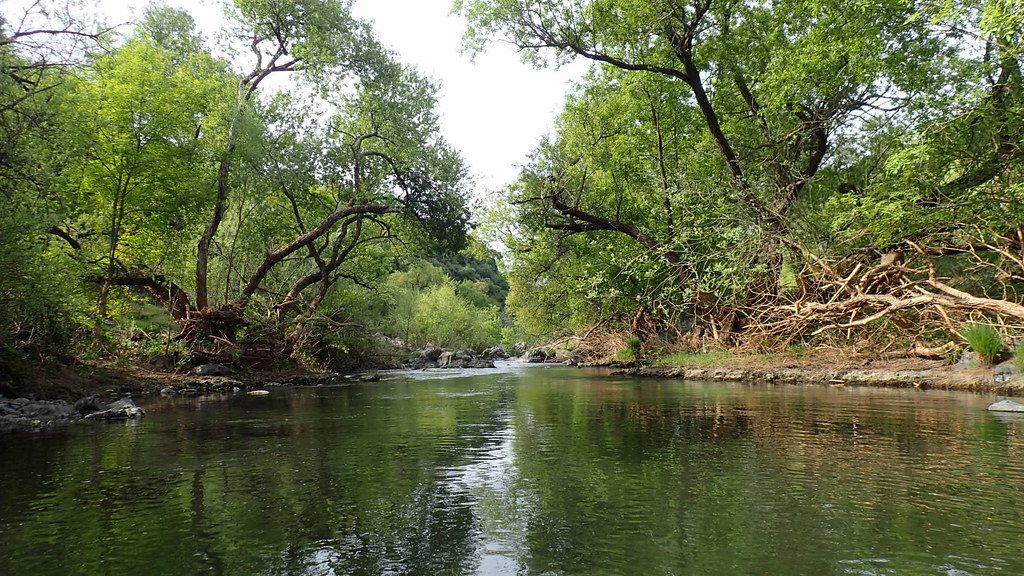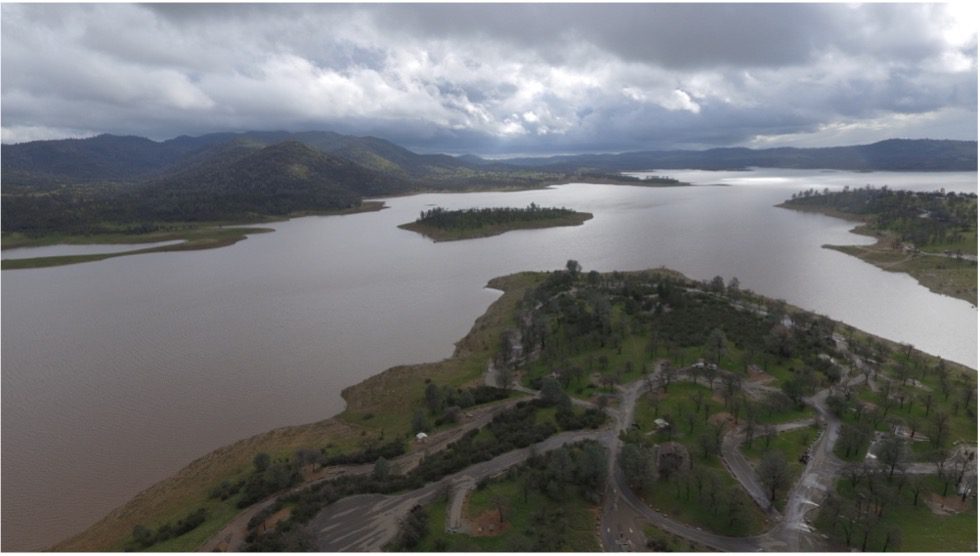Monday March 22, 2021

Part of responsibly managing a watershed is efficiently using a limited water supply to balance the needs of both humans and wildlife. This is especially true in the highly variable climate of California, and even more so in a rain-fed river system like the Calaveras River, where the water supply can be unpredictable. Today, as part of World Water Day, we are taking a look at a new Habitat Conservation Plan (HCP) developed for the for the Calaveras River, which includes several objectives related to water flow and water quality to help conserve vital fish habitat used by rainbow trout/steelhead, and occasionally by Chinook salmon. These objectives ensure enough downstream flow to allow fish passage during key periods of the salmonid life cycle.
Early in the development of the Habitat Conservation Plan plan, the need for a guaranteed year-round minimum flow was identified as a crucial conservation strategy. The Stockton East Water District acts as Watermaster for the Calaveras River by helping coordinate flows originating from New Hogan Dam with the U.S. Army Corps of Engineers. The HCP includes operational criteria for water flow at the dam to support wildlife as well as agricultural and municipal needs. Specifically, it calls for at least 25 cubic feet per second released from New Hogan Reservoir year-round to protect important reaches of the Calaveras above the Bellota Weir that trout and salmon use for spawning and rearing. Integral to maintaining this year-round flow is conservative management of reservoir storage at New Hogan Dam to help ensure enough water for fish even in dry years.

Although the total storage capacity of New Hogan Reservoir is approximately 317,000 acre-feet, measures are sometimes taken before winter rains to reduce overall storage for flood control and safety purposes (that is, when storage is greater than 152,000 acre-feet on October 15). These managed flood control releases, which typically occur between October 15 and November 30, line up well with the migration of adult Chinook salmon and Central Valley steelhead, particularly toward the end of the release period. As part of the Habitat Conservation Plan, Stockton East will continue to coordinate flood control releases through the U.S. Army Corps of Engineers in a flow regime that optimizes opportunities for fish to migrate in and out of spawning and rearing reaches, while reducing the threat of stranding that may occur as flows recede. The plan also calls for maintaining good water quality in the river for fish health. Cleaning water diversions can flush debris and sediment in the river, and conducting maintenance to the infrastructure with heavy machinery can also stir up sediment. The Habitat Conservation Plan ensures these activities will be done in late summer, a time that minimizes impacts on fish, and also calls for monitoring river turbidity, or cloudiness, to assess impacts on fish populations.

Being good stewards of the Calaveras River is a responsibility not just of the District, but also of all residents who use the water for agricultural, residential, or municipal needs. In light of this, the Habitat Conservation Plan describes several best management practices such as education and outreach programs to inform the general public about the importance of water conservation measures. These include improving farming irrigation efficiency, recharging groundwater, and reducing watering of lawns and other landscaping. Stockton East already offers services for agricultural users through on-farm irrigation evaluations, adaptive irrigation scheduling, and crop evapotranspiration information (the ratio of groundwater lost due to evaporation through plant transpiration) via the CIMIS website. They also provide data on the quantity and quality of surface, ground, and drainage water, and offer educational programs on agricultural water management for farmers and their staff. Managing river flows is crucial to conserve fishes in California’s variable climate, which in the last decade included one of its most prolonged and severe drought periods, followed by the wettest water-year on record. The Calaveras Habitat Conservation Plan establishes a roadmap of best management practices to conserve the river from a water operations standpoint, while also providing opportunities for community members to help advance conservation goals. Watch our recent video to learn more about providing sufficient, clean water for fish under the Calaveras Habitat Conservation Plan.
This post was featured in our weekly e-newsletter, the Fish Report. You can subscribe to the Fish Report here.
